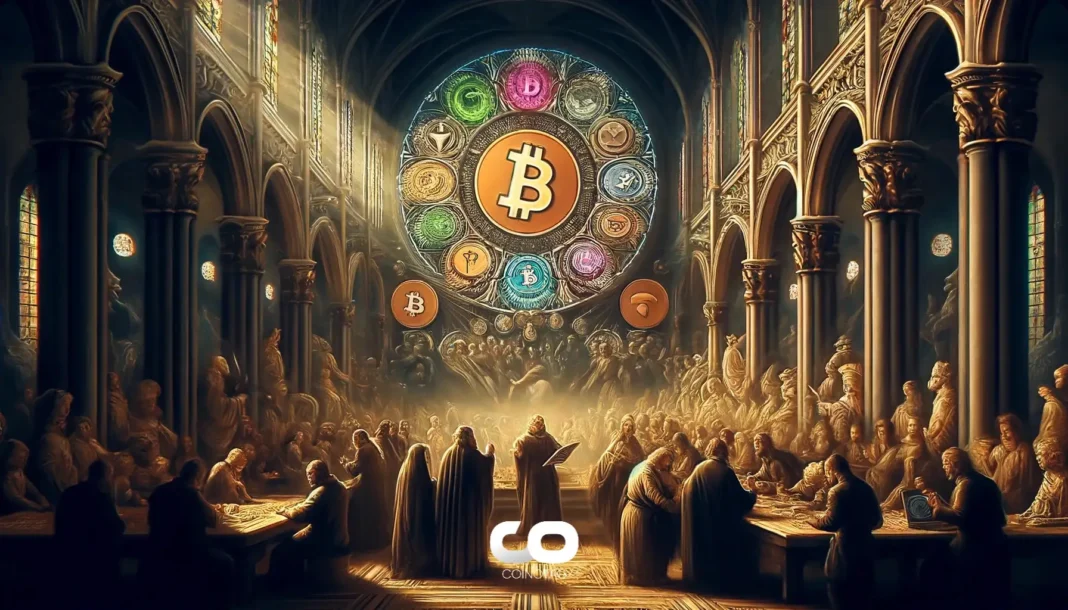| COINOTAG recommends • Exchange signup |
| 💹 Trade with pro tools |
| Fast execution, robust charts, clean risk controls. |
| 👉 Open account → |
| COINOTAG recommends • Exchange signup |
| 🚀 Smooth orders, clear control |
| Advanced order types and market depth in one view. |
| 👉 Create account → |
| COINOTAG recommends • Exchange signup |
| 📈 Clarity in volatile markets |
| Plan entries & exits, manage positions with discipline. |
| 👉 Sign up → |
| COINOTAG recommends • Exchange signup |
| ⚡ Speed, depth, reliability |
| Execute confidently when timing matters. |
| 👉 Open account → |
| COINOTAG recommends • Exchange signup |
| 🧭 A focused workflow for traders |
| Alerts, watchlists, and a repeatable process. |
| 👉 Get started → |
| COINOTAG recommends • Exchange signup |
| ✅ Data‑driven decisions |
| Focus on process—not noise. |
| 👉 Sign up → |
-
Ethereum co-founder Vitalik Buterin emphasizes the importance of timing in decentralizing rollup-based layer-2 platforms, aligning security with decentralization.
-
Rollups must consider the maturity of their proof systems before transitioning, balancing centralization risks with system reliability.
-
“A good reminder that stage 2 is not the only thing that matters for security: the quality of the underlying proof system matters too,” Buterin highlights.
Vitalik Buterin discusses the timing of decentralizing Ethereum rollups, advocating for security over hasty transitions to minimize risks.
Understanding the Rollup Model and Its Stages
The rollup model in Ethereum seeks to enhance scalability by processing transactions off-chain while still ensuring security through on-chain verification. Rollups are categorized into three stages: stage zero, stage one, and stage two, each representing a progression in decentralization and trustlessness. Stage two is the ultimate goal, where rollups operate fully decentralized, reducing dependence on any single entity.
The Importance of Proof Systems
Proof systems form the foundation of rollup security. Buterin argues that decentralization should only occur once these systems are sufficiently robust. The proof system’s failure probability must be low enough that the potential risks of a centralized mechanism becoming a failure point outweigh the risks of decentralization itself.
The Threat Landscape Facing Crypto Infrastructure
As cryptocurrency adoption grows, so does the sophistication of cyber threats. Bad actors, including state-sponsored groups like Lazarus, actively target vulnerable ecosystems. This grim reality necessitates stringent security measures and an informed approach to decentralization.
| COINOTAG recommends • Professional traders group |
| 💎 Join a professional trading community |
| Work with senior traders, research‑backed setups, and risk‑first frameworks. |
| 👉 Join the group → |
| COINOTAG recommends • Professional traders group |
| 📊 Transparent performance, real process |
| Spot strategies with documented months of triple‑digit runs during strong trends; futures plans use defined R:R and sizing. |
| 👉 Get access → |
| COINOTAG recommends • Professional traders group |
| 🧭 Research → Plan → Execute |
| Daily levels, watchlists, and post‑trade reviews to build consistency. |
| 👉 Join now → |
| COINOTAG recommends • Professional traders group |
| 🛡️ Risk comes first |
| Sizing methods, invalidation rules, and R‑multiples baked into every plan. |
| 👉 Start today → |
| COINOTAG recommends • Professional traders group |
| 🧠 Learn the “why” behind each trade |
| Live breakdowns, playbooks, and framework‑first education. |
| 👉 Join the group → |
| COINOTAG recommends • Professional traders group |
| 🚀 Insider • APEX • INNER CIRCLE |
| Choose the depth you need—tools, coaching, and member rooms. |
| 👉 Explore tiers → |
Emerging Metrics for Security Evaluation
Daniel Wang proposes a new standard – the “BattleTested” badge for rollups. This designation indicates that a platform has withstood the scrutiny of potential high-level attacks while managing significant asset liquidity. By placing a $100 million asset retention requirement, this metric aims to bolster trust in rollup systems.
Decentralization: Timing is Critical
Buterin’s perspective on decentralization emphasizes that transitioning too early can expose users to heightened risks. He advocates for a methodical approach, where the safety of onchain proof systems should precede the shift to a decentralized model. This underscores the belief that premature decentralization might create more vulnerabilities than it mitigates.
| COINOTAG recommends • Exchange signup |
| 📈 Clear interface, precise orders |
| Sharp entries & exits with actionable alerts. |
| 👉 Create free account → |
| COINOTAG recommends • Exchange signup |
| 🧠 Smarter tools. Better decisions. |
| Depth analytics and risk features in one view. |
| 👉 Sign up → |
| COINOTAG recommends • Exchange signup |
| 🎯 Take control of entries & exits |
| Set alerts, define stops, execute consistently. |
| 👉 Open account → |
| COINOTAG recommends • Exchange signup |
| 🛠️ From idea to execution |
| Turn setups into plans with practical order types. |
| 👉 Join now → |
| COINOTAG recommends • Exchange signup |
| 📋 Trade your plan |
| Watchlists and routing that support focus. |
| 👉 Get started → |
| COINOTAG recommends • Exchange signup |
| 📊 Precision without the noise |
| Data‑first workflows for active traders. |
| 👉 Sign up → |
Addressing Decentralization Misconceptions
Experts highlight a common misconception that decentralization is merely an ideological pursuit. In reality, it is a long-term responsibility that requires comprehensive planning to minimize user risk. As the CTO of PureFi, Mike Tiutin reinforces that the race to stage two can jeopardize user safety, underscoring the importance of steady progression.
Conclusion
As Ethereum continues to evolve, the conversation around rollup decentralization remains vital. Vitalik Buterin’s insights invite deeper consideration of when to transition from centralized control to a fully decentralized model. The overarching message is clear: ensure security before seeking decentralization to foster a resilient and trustworthy ecosystem.
| COINOTAG recommends • Traders club |
| ⚡ Futures with discipline |
| Defined R:R, pre‑set invalidation, execution checklists. |
| 👉 Join the club → |
| COINOTAG recommends • Traders club |
| 🎯 Spot strategies that compound |
| Momentum & accumulation frameworks managed with clear risk. |
| 👉 Get access → |
| COINOTAG recommends • Traders club |
| 🏛️ APEX tier for serious traders |
| Deep dives, analyst Q&A, and accountability sprints. |
| 👉 Explore APEX → |
| COINOTAG recommends • Traders club |
| 📈 Real‑time market structure |
| Key levels, liquidity zones, and actionable context. |
| 👉 Join now → |
| COINOTAG recommends • Traders club |
| 🔔 Smart alerts, not noise |
| Context‑rich notifications tied to plans and risk—never hype. |
| 👉 Get access → |
| COINOTAG recommends • Traders club |
| 🤝 Peer review & coaching |
| Hands‑on feedback that sharpens execution and risk control. |
| 👉 Join the club → |
| COINOTAG recommends • Members‑only research |
| 📌 Curated setups, clearly explained |
| Entry, invalidation, targets, and R:R defined before execution. |
| 👉 Get access → |
| COINOTAG recommends • Members‑only research |
| 🧠 Data‑led decision making |
| Technical + flow + context synthesized into actionable plans. |
| 👉 Join now → |
| COINOTAG recommends • Members‑only research |
| 🧱 Consistency over hype |
| Repeatable rules, realistic expectations, and a calmer mindset. |
| 👉 Get access → |
| COINOTAG recommends • Members‑only research |
| 🕒 Patience is an edge |
| Wait for confirmation and manage risk with checklists. |
| 👉 Join now → |
| COINOTAG recommends • Members‑only research |
| 💼 Professional mentorship |
| Guidance from seasoned traders and structured feedback loops. |
| 👉 Get access → |
| COINOTAG recommends • Members‑only research |
| 🧮 Track • Review • Improve |
| Documented PnL tracking and post‑mortems to accelerate learning. |
| 👉 Join now → |







